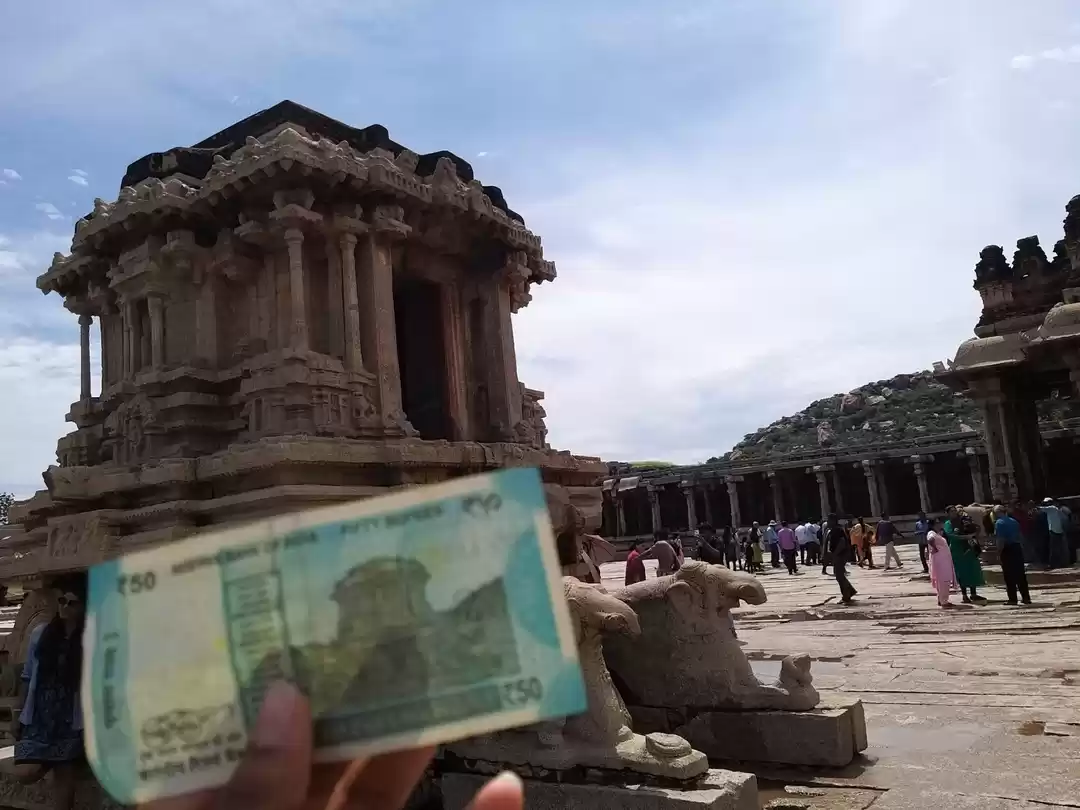
About Hampi: Hampi is a UNESCO World Heritage Site located in Karnataka, famous for its Vijayanagar ruins. The place is associated with Hindu Mythology.
How to Reach: It's about 300km from Bangalore, you can reach Hospet by bus or train and then take an auto to Hampi.
Where to Stay: We stayed in the North of Hampi, so we covered the north sites first and the next day we covered the sites located at south of Hampi. You will find a lot of cafes in the north side as well where you can just sit back and relax. The last boat ride is at 6pm, so plan accordingly. You can also rent bicycles or bikes to explore the town on your own.
When to visit: Try to avoid the summer months as visiting the ruins in scorching heat can be tough. The best months would be October and November.
Where to eat: Mango Tree, Laughing Buddha and Gopi Guesthouse


The ancient name of the river was Pampa. The river divides Hampi into two parts, one is known for its architectural ruins and the other side for its small cafes.
The coracle ride should not be missed.

Be prepared to climb more than 500 steps but once you reach the top, the view would be worth it. There's also a floating stone or 'ramsetu' that was used to build the bridge for Lanka.
Do not carry eatables in your hand as monkeys can be mischievous.



Pampa Sarovar is among one of the few sarovars or sacred ponds which find mention in the religious scriptures of the Hindus. It is believed to be formed by Lord Brahma and is in fact one of the five sacred sarovars of the Hindus. It is named after Goddess Pampa Devi which is a form of Parvati who did Tapasya or deep meditation for a long time for Lord Shiva at this place.


Day 2 was focused on the Northern side of hampi, each temple has its own story to tell.

( Source for the stories behind every temple: http://www.indianholiday.com/hampi/ and http://hampi.in/)
According to mythology, it dates back to 7th Century AD, and this makes it one amongst the oldest temples in India. Lokamahadevi, the queen of Vikramaditya, built this temple to commemorate her husband’s triumph over the Pallavas of Kanchipuram. Since its inception, the complex gradually grew; lamp posts, flag posts, pillars, pillared halls, sub-shrines, towered-gateways, temple kitchen etc were added with the growing time. UNESCO has considered this temple as a World Heritage Site, as a part of Hampi Group of Monuments.


Vittala, a form of Lord Vishnu who was worshiped as a prime deity by the local herdsmen of the empire, is the focus of this temple.
The famous 'Stone chariot' is situated in this complex. In past times this chariot was known to be as a ‘Garuda’, on the either side of Garuda, there are big Mandapas, with pillars on all sides. The inside halls and temples of campus are carved with a huge collection of intricate sculptures on huge granite pillars.
The other tourist attractions in the complex include: Ranga Mandapa with its 56 musical pillars and 4 open halls and Goddess's shrine. The road leading up to the temple complex used to be the market for horse trading.

Although called Queen’s bath, the pool was used by both Kings and Queens.
In total there are 11 domed chambers, tall and inter-connected, giving it a grand appearance. These halls have different shapes, such as drum-shape and octagonal. In the middle is an ornate hall that was perhaps used for ceremonial gatherings that included elephant processions.

Zenana enclosure was a secluded area reserved for the royal women. The enclosure had been strategically designed for the women folks to watch the royal ceremonial functions or the march past in privacy. Three watchtowers can be seen at the corners of the enclosed area.

The best places to see a sunset or sunrise. Hema in Sanskrit language means gold. The name of the hill thus connects with the legend that it’s on this hill that Lord Shiva did penance before marrying a local girl Pampa. Shiva was impressed by her dedication for him and consent to marry her, due to this, it rained gold on this hill.
Also this is the place where Shiva burnt Kama (the god of lust) with his third (fire) eye. In helping Pampa to marry Shiva, Kama distracted Shiva from his penance. This attracted the wrath of Shiva and eventually killed Kama by fire. Later Rathi (goddess of passion and Kama’s wife) pleaded for the life of Kama. Siva brought him back to life but only in character not as a physical being.
Seated on the coil of Shesha or Adishesha, King of all Nagas (snakes), is the monolithic idol of Lord Narasimha, one of the ten avatars of Lord Vishnu, the biggest statue in Hampi.

The temple has been occupied by bats and it's tough to stay and explore the temple due to the smell.
It was once the private temple of the kings and the royal family of Vijayanagara. The temple is famous for the lovely bas relics and panels depicting the story of the epic Ramayana.

In the local language Badva means poor and Linga represents Shiva. Legend has it that the Shiva Linga placed inside the temple was commissioned by a poverty-stricken peasant woman. Hence the temple came to be known as Badavilinga Temple.

Tips for the Trip:
1. Do carry cash as the probability of finding an ATM is less.
2. Preserve the ticket that you buy for entry at Vittala Temple, as it is valid for other monuments as well.
3.Do carry sunscreen/cap/sunglasses and water to protect yourself from the heat.
Frequent searches leading to this page:-
Vijayanagara Empire, Pampa Devi


























